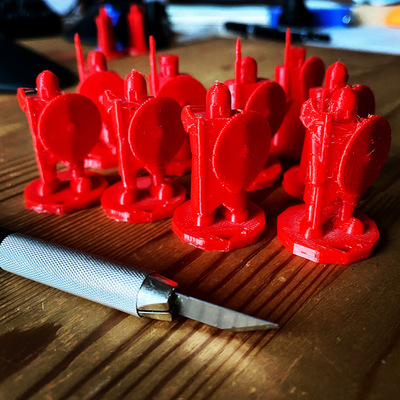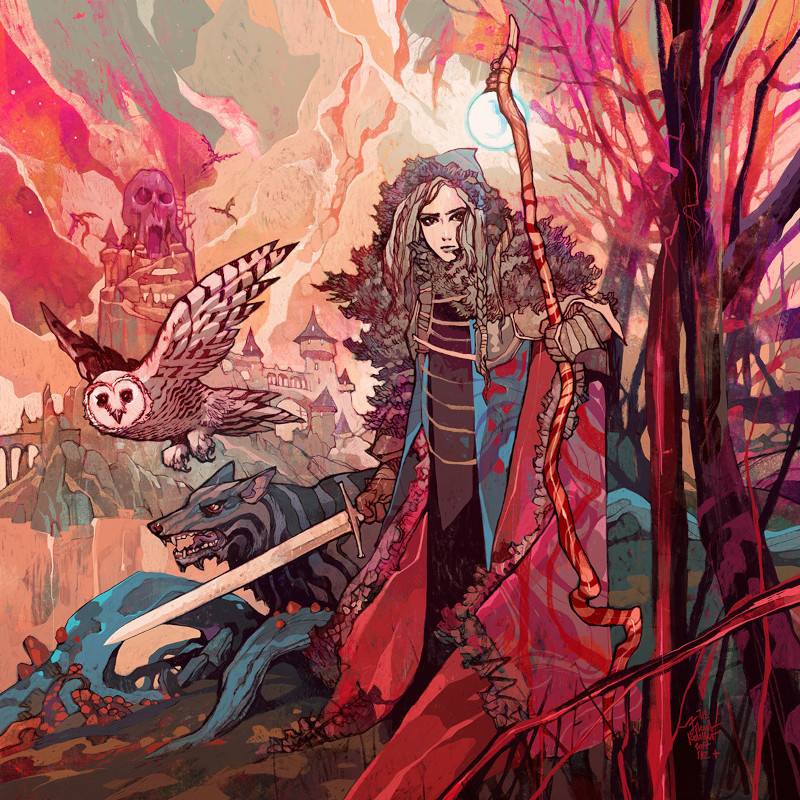
|
Eow Links 78 |
| 2022-06-26 |
Eow Links 78

"Eow" for End Of Week. TTRPG Links I gathered during the week. This is iteration 78.
For more weekly links, head to The Seed of Worlds Shiny TTRPG link collection. For monthly links, look at The Glatisant.
Most of the links below are found via the RPG Planet that Alex Schroeder built and maintains. If you have an RPG blog, please consider joining the conversation.
My favourite for this week is Reflection and Formation, "a recognition that the most useful elements of setting are those that provide contact surfaces for play at the table"
it looks like the retro-clone explosion is allowing people to really pursue the specific type of game they like - more random and chaotic magic? Go DCC. Want to play 1e just with nice neat layout? Old School Essentials. Want to do 1e but lasers and starships? Stars Without Number. Want your 4e big damn heroes but with the 3.5e universal ruleset? 13th Age.
Finding spells is better than choosing them
And it makes sense. Not only because it saves time, but because fighters must find their own magic, too - magic weapons, magic armor, and so on. Both modern and old school versions of D&D assume fighters will get those weapons, but not be able to CHOOSE a Flame Tongue or Vorpal Sword at level 10, for example.
That got me thinking that I could do drawings and doodles of non-combat situations in order to enhance the transmission of information in the Theater of the Mind. For example, when I describe something such as a device or a building, I could do a quick doodle of it and show it to the players as I was describing it so that things were made more clear.
Commanding Pre-Modern Armies, Part IIIb: Officers
First, they have organizational responsibility; the officer is supposed to make sure the men under their command show up, get fed, have all of their equipment and so forth. Second, officers execute decisions made by their superior officers; if the army commander sounds the charge, all of the officers along the line execute that charge by leading their units forward. Finally – and most important for our question – sometimes even relatively junior officers are expected to make their own tactical decisions.
If you’re the referee of a campaign and you have a great scene in mind, like I sometimes do, then you have two problems: for one, you’re inclined to railroad your players towards that scene, and two, you are probably back at square one after the scene has played out.
Getting Started With The OSR: Part 3: Put Story In Its Proper Place
Story emerges from the context of the game and the decisions players make within that context. It is not predetermined. It is often not anticipated by the game master. The game master is often as surprised by the outcomes as the players. Many OSR referees will tell you that this is one of their favorite parts of the game.
The OSR etc aversion to extensive fictional histories and backstories is not just a practical norm, nor is it just a rejection of tabletop roleplaying as a thespian concern; this aversion is also a recognition that the most useful elements of setting are those that provide contact surfaces for play at the table.
D&D combat has some assumptions...
Here George Silver (1604) explains why attacks of opportunity against a withdrawing opponent is broken in D&D.
The Push and Pull of Backstories
When backstories are left up to the player, they become a battleground of narrative control. Some game masters, hungry for player input, get frustrated when a player expects race, class, and background to be enough and writes nothing. On the other hand, game masters much more concerned with their world (...) may resent even having to read the backstory a player writes
Tarot for Adventure Building Dummies
I’m going to tell you how to use the Tarot as an actual game mechanic. Well, not really. Tarot makes a sucky in-game mechanic. But because the Tarot’s a storytelling tool at its core, it’s a great way to build a story. Or a game. Or a story game.
Tales of Xadia and the Limits of Canon
So how do you make the most of games that are set in pre-existing settings or properties?
So what is the OSR (again again)
Hackmaster 4th edition is not OSR. Ignoring that it predates the OSR slightly, maybe. It wasn't written to be OSR. It's a retroclone, but it was written as a parody that is also a functional, if ridiculously overwrought, game.
Hexflower Lifepath Character Generation
Your job was literally killing you. You need to spend a few hours in the bakta tank a week or else the sickness just gets worse. Gain six automeds and Medicine +2.
You can be the best at the actual game itself on its own terms. Or you can be somebody who it is very enjoyable to play the game with. These are two different things and are often, indeed, at odds with one another
Simply adding more rules to exploration, like pages and pages of walking speeds for mounts or types of terrain and how that impacts travel, would not add mechanical support to that activity. But adding a procedure, like a hex crawl procedure or an overloaded encounter die for overland travel, gives exploration the structure it needs to stand on its own.
The DM has an additional role, that of the director: Taking all the ideas and performances and themes and deciding what should happen in what order. This style emphasises the power of the DM, who bears final responsibility for weaving the story from the threads the other players provide, making sure everyone has a good time, and making sure everyone is fulfilling their responsibilities to the group.
Oh, Your cleric is healing everyone
Grapple, fly 300-400 ft. in the air, release (and hope the arcane caster is dumb enough to waste his featherfall on the fool).
A Good Collection of OSR PC Miniatures
Basically, the most archetypical the miniature is, the more bang for your buck I think you can pull out of it. Because it just needs to be a good representation, not a perfect replication. This also prevents the miniature from interfering with your world-building and means you have to haul around fewer plastics.
My goal with Der Hüne is to get back to those older, more monstrous giants. Given that this mythology is half-Roman, these people will have been familiar with some of the tales of Goliath, the Anakim, and others from Jewish mythology. So maybe some of those tales entered into their thinking.
The flâneur, literally a "stroller" or one who "wanders without purpose", is the word for a man (or woman) of leisure who saunters idly through urban streets observing his surroundings with detached curiosity.
Here is Nassim Taleb describing himself, the flâneur, in Antifragile:
Someone who, unlike a tourist, makes a decision opportunistically at every step to revise his schedule (or his destination) so he can imbibe things based on new information obtained. In research and entrepreneurship, being a flâneur is called ‘looking for optionality.’ A non-narrative approach to life.
Things that gain from disorder.
Fearless Defenders – a One-Shot Structure
Our heroes are at a remote location, filled with cheerful and innocent NPCs. An army approaches, sure to overrun said location – unless our heroes can stop them! From Seven Samurai to Zulu, it’s a classic plot for fiction – and a great plot for a one-shot.
Sugg can be a bit credulous in places, but he does a good job of establishing that human blood, fat, and bone saw fairly widespread use in both European folk remedies and 'academic' medicine during the period, giving rise to a range of often gruesome medical practises that, in some cases, lingered on as late as the nineteenth century.
The GM would have a Death tarot card face down on the table. At any point (as long as you weren’t in the middle of resolving a player action), the GM could turn it face up. As long the death card is showing, any potentially lethal injury that could knock a PC out, kills them. It does not give the GM license to ice a PC out of nowhere, but it signals a ratcheting up of the stakes, and does give the GM more permission to bring the hurt than they usually have.
Don't jump straight into the full campaign, start with running a one shot with pre-generated characters.
